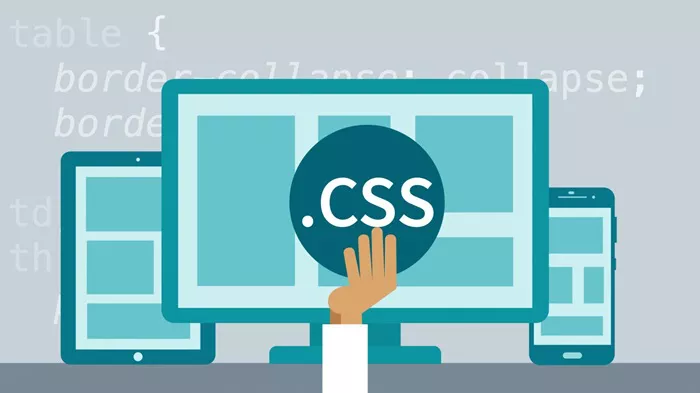In the world of web design, CSS is a fundamental technology that plays a crucial role in how websites look and feel. But what does CSS stand for, and why is it so important? This article delves into the intricacies of CSS, exploring its meaning, functionality, and significance in web design. By the end, you’ll have a thorough understanding of CSS and how it enhances the web development process.
1. Introduction to CSS
CSS Defined
CSS stands for Cascading Style Sheets. It is a stylesheet language used to describe the presentation of a document written in HTML or XML. Essentially, CSS determines how elements on a web page are displayed, including their layout, colors, fonts, and overall visual style.
The Role of CSS in Web Design
In web design, CSS is responsible for the aesthetic and visual aspects of a website. It allows designers to separate content (HTML) from presentation (CSS), enabling more control over the look and feel of web pages. This separation also facilitates easier maintenance and updates to the design without altering the underlying content.
2. The History and Evolution of CSS
Origins of CSS
CSS was developed by the World Wide Web Consortium (W3C) to address the need for a standardized way to style web documents. Before CSS, web design relied heavily on HTML for both content and styling, leading to cumbersome and inflexible code.
CSS Milestones
CSS1: Released in 1996, CSS1 introduced basic styling capabilities, including font properties, color, and text alignment.
CSS2: Launched in 1998, CSS2 added support for media types, positioning, and more sophisticated selectors.
CSS3: CSS3, released in 1999, introduced modules that allowed for more granular control over styles, including advanced features like animations, transitions, and responsive design.
3. Understanding CSS Syntax and Structure
Basic CSS Syntax
CSS uses a simple syntax that consists of selectors and declarations. A selector targets an HTML element, and declarations specify the style properties to be applied.
CSS Selectors
Selectors are used to select the HTML elements you want to style. They can be as simple as an element name or as complex as combinations of attributes.
Common Selectors:
Type Selector: Targets elements by their tag name (e.g., p for paragraph).
Class Selector: Targets elements by their class attribute (e.g., .class-name).
ID Selector: Targets elements by their ID attribute (e.g., #id-name).
4. The Cascade and Inheritance
Cascading Nature of CSS
The term “cascading” refers to the priority scheme used to determine which style rules apply when multiple rules conflict. This cascade allows for a flexible and hierarchical approach to styling.
CSS Specificity
Specificity determines which CSS rule is applied by the browser when multiple rules target the same element. Specificity is calculated based on the types of selectors used.
Inheritance in CSS
Inheritance allows certain properties to be passed down from parent elements to their children. This means that child elements can inherit the styles of their parent elements unless explicitly overridden.
5. Core CSS Properties and Their Functions
Color and Background Properties
Color: Sets the color of the text.
Background-Color: Sets the background color of an element.
Background-Image: Sets an image as the background of an element.
Typography Properties
Font-Family: Specifies the font to be used.
Font-Size: Sets the size of the text.
Font-Weight: Determines the thickness of the text.
Box Model Properties
Margin: Controls the space outside an element.
Padding: Controls the space inside an element, around the content.
Border: Sets the border around an element.
See also:Graphic Design Vs. Web Design: Which Is Better
6. Advanced CSS Techniques
Responsive Design with CSS
Responsive design ensures that web pages look and function well on various devices and screen sizes. CSS media queries play a crucial role in achieving responsiveness.
CSS Grid and Flexbox
CSS Grid: A powerful layout system for creating complex and responsive grid-based layouts.
Flexbox: A layout model that allows for responsive and flexible arrangements of elements within a container.
CSS Animations and Transitions
CSS allows for the creation of animations and transitions to enhance user experience with smooth visual effects.
7. CSS Frameworks and Preprocessors
Popular CSS Frameworks
CSS frameworks provide pre-written code that simplifies the process of building responsive and aesthetically pleasing websites. Some popular frameworks include:
Bootstrap: A widely-used framework for building responsive and mobile-first websites.
Foundation: A responsive front-end framework with a flexible grid system and UI components.
Bulma: A modern CSS framework based on Flexbox.
CSS Preprocessors
CSS preprocessors extend the capabilities of CSS by adding features like variables, nesting, and mixins. Popular preprocessors include:
Sass: Syntactically Awesome Style Sheets, which adds powerful features to CSS.
Less: Leaner Style Sheets, which simplifies and extends CSS with dynamic behavior.
8. Best Practices for Writing CSS
Organizing CSS Code
Modular Approach: Break CSS into modular, reusable components.
Consistent Naming Conventions: Use meaningful and consistent class and ID names.
Comments: Add comments to explain complex or critical sections of CSS.
Performance Optimization
Minification: Remove unnecessary spaces and comments to reduce file size.
Efficient Selectors: Use efficient and specific selectors to minimize performance impact.
Lazy Loading: Load only necessary styles initially and defer others for later.
Conclusion
CSS, or Cascading Style Sheets, is an essential technology in web design that defines the visual presentation of web pages. By separating content from presentation, CSS allows for greater flexibility, maintainability, and creativity in web design. Understanding the basics of CSS, its syntax, core properties, and advanced techniques is crucial for anyone aspiring to build modern, responsive, and visually appealing websites.
Whether you’re a seasoned web designer or a beginner, mastering CSS opens up a world of possibilities for creating engaging and user-friendly web experiences. As web technologies continue to evolve, the importance of CSS in shaping the digital landscape remains undeniable. Embrace the power of CSS, and unlock your potential in the dynamic and ever-changing field of web design.
Related topics:
- Distributing Hostinger Webmail: A Comprehensive Guide
- DLV Agency Announces Expanded Web Design Services For Small Businesses In Miami
- Crypto: Solana Name Service Reinvents .Sol Domain Names

